Introduction
BlockTrades made Steem Power delegations available again four days ago but already temporarily sold out after 1 day. This high demand occurred even though the price was really high in comparison to pervious sales. I myself bought a little bit for 50€ because I was curious.
However, what are other users doing with their new Steem Power and how much did they spend?
Scope of Analysis
The data doesn't include all delegations from the beginning of the sale and so only covers the 12th-14th February. (2018-02-12T14:50:12 - 2018-02-14T16:04:33)
Data collected:
- User names
- Amount of Steem Power bought
- Amount of Money spend
- Downvotes, Upvotes and Self-Upvotes
- Timestamps
Tools
I used Python in combination with the Steemit-Python API. To know what to look for I used steemd.com. At steemd.com you can directly see how a transaction looks like on the Steem Blockchain.
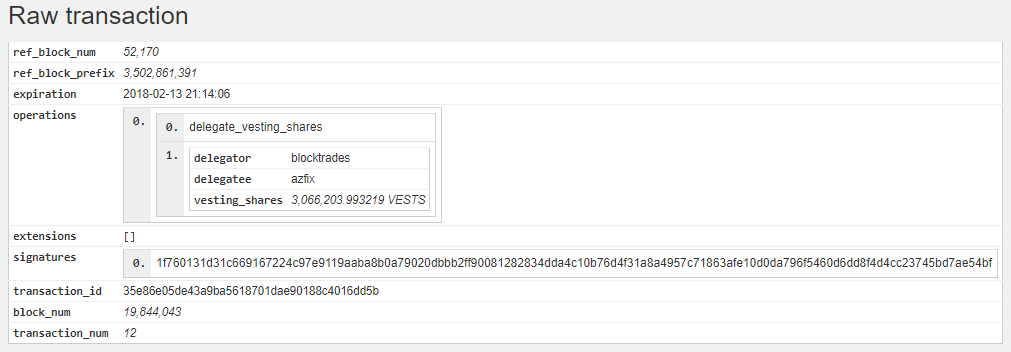
1) Setup & Save
This tells me I need to look out for a transaction with the operation: "delegate_vesting_shares" So you just need to get the "account history" of BlockTrades and then look over every entry.

I decided to collect the data points featured above and made a list for every one.
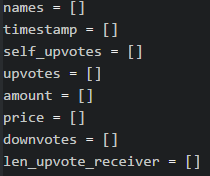
To save this data as a .csv first I imported the library pandas, created a dictionary containing the previous created lists, made a Dataframe out of this dictionary and finally saved it as a .csv .

2) Data Collection
a)
To collect the names and the timestamp, I simply added these values to the lists.

But to get the amount of Steem Power I needed to convert Vests to Steem Power and split the value from the string first.


For the price I visited BlockTrades.us and took the current ETH/SP Del Price (1841.635SP/ETH) + recent ETH price in $ (885.15).
price paid = (amount SP / SP/ETH )* ETH $ price
b)
In order to get more information what the people are doing with their Steem Power I looked at everyones "voting history".
( This is not really efficient because all votes a user ever did need to get processed and looked at. However, I didn't knew any other simple methods so I went for it. )
Because we only want votes after the users bought SP, we need to check if the time of this vote is above our starting time first.

- To check if a vote is a downvote we need to check if it had a negeative
percent/ voting power - To check if a vote is a self upvote we need to check if the upvoted post/comment belongs to the user himself --> else: normal upvote
- To get the number of different users upvoted we add every new user who got upvoted to a list and return the length at the end
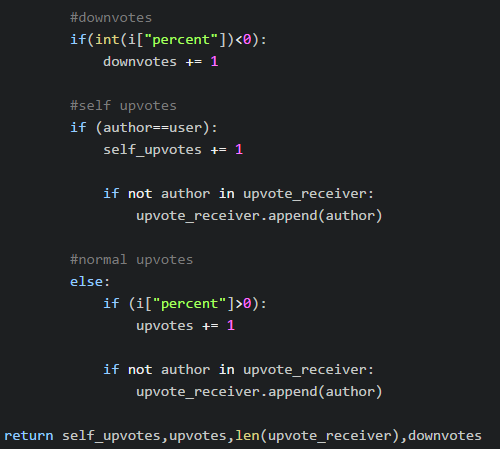
Finally we just need to append this data to the respectable lists again.
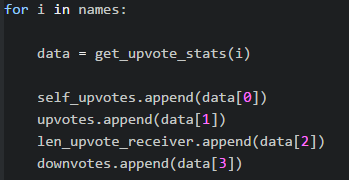
Results
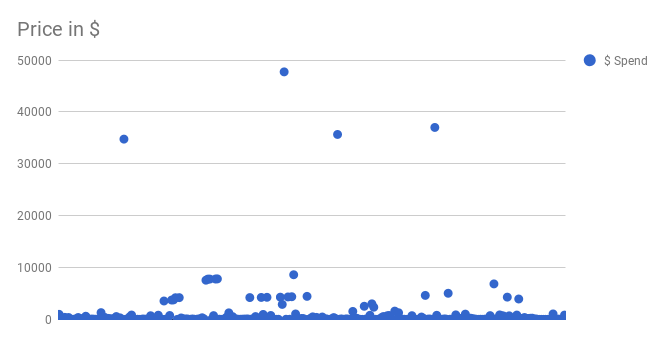
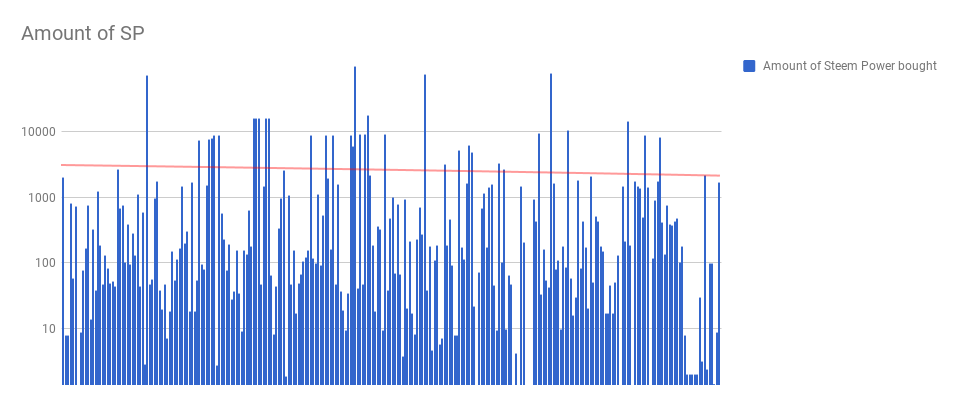
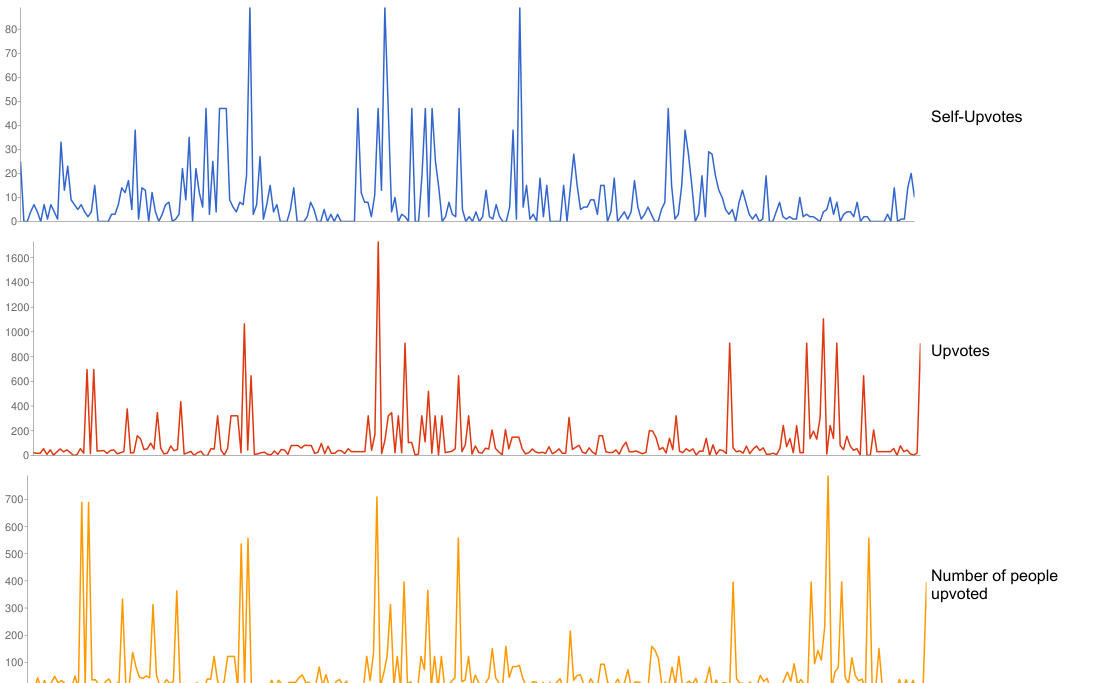
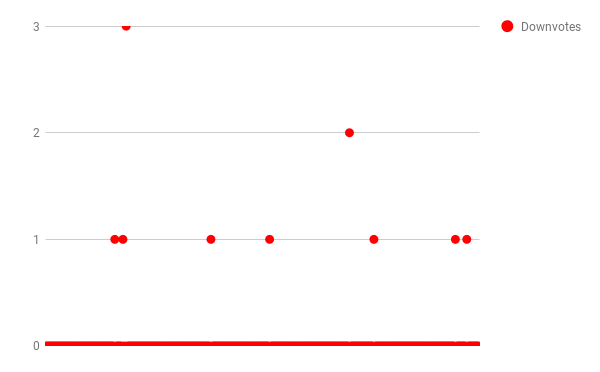
What can we see?
- over 250+ users purchased SP Delegations spending
332,915.062$for a total of over692,660 SP - even thought the average money spent is
1251.56$most people didn't spend over 100$ --> median:72.33$ - the average user used 9% of his 45 upvotes to upvote himself (median value)
- 4 WHALES (rich people) bought Steem Power Delegations with the highest order being over
47 000$ - only few ( 1-2 user) abused the system by using SP for downvoting
- 1 user abused the system by upvoting his own posts/comments 89 times in a time span of 2 days!
- 14 bots used the SP for upvoting other posts --> paid bots
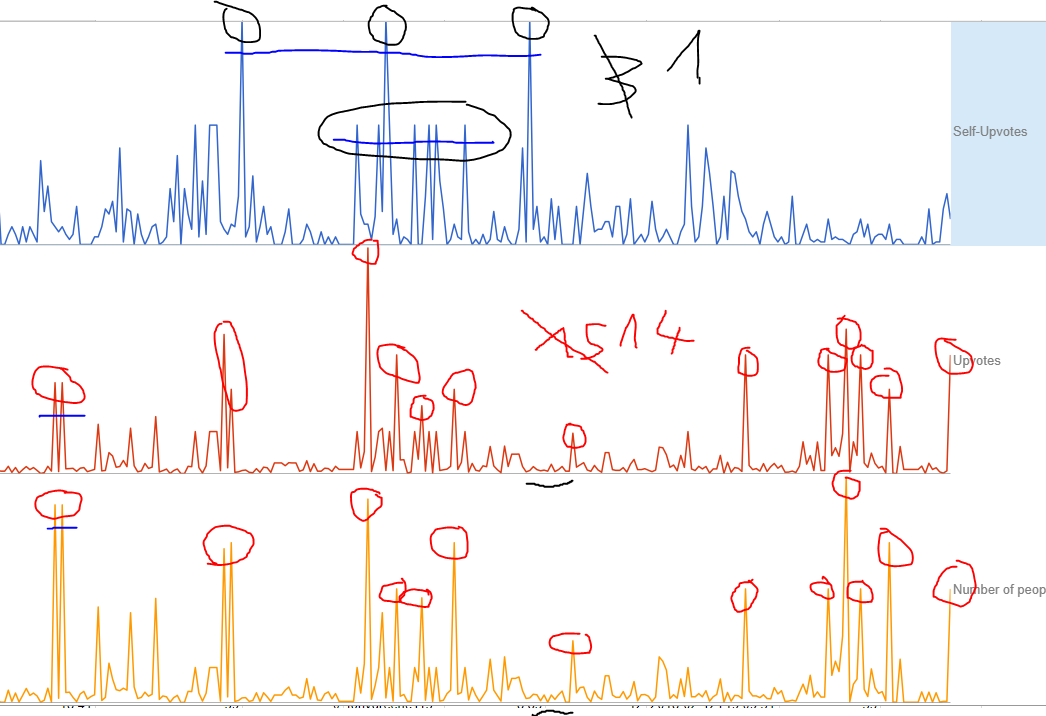
I got the last two assumptions by comparing these 3 graphs with each other. Every graph has a different scale but you can see that accounts that upvote a lot of posts often also upvote a lot of different users. This is a sign for a bot who is paid to upvote. You can also spot accounts who only upvote themselves by simply looking at the number of different people they upvoted and their self upvotes.
One problem I noticed was some values being the same / at the same level. This either means that the person purchased SP multiple times or someone is running multiple bots who upvote the same people / the same amount of people. Furthermore, the ETH price was lower a few days ago,
Let me now if you find some thing interesting or got problems executing the code! :)
Posted on Utopian.io - Rewarding Open Source Contributors
